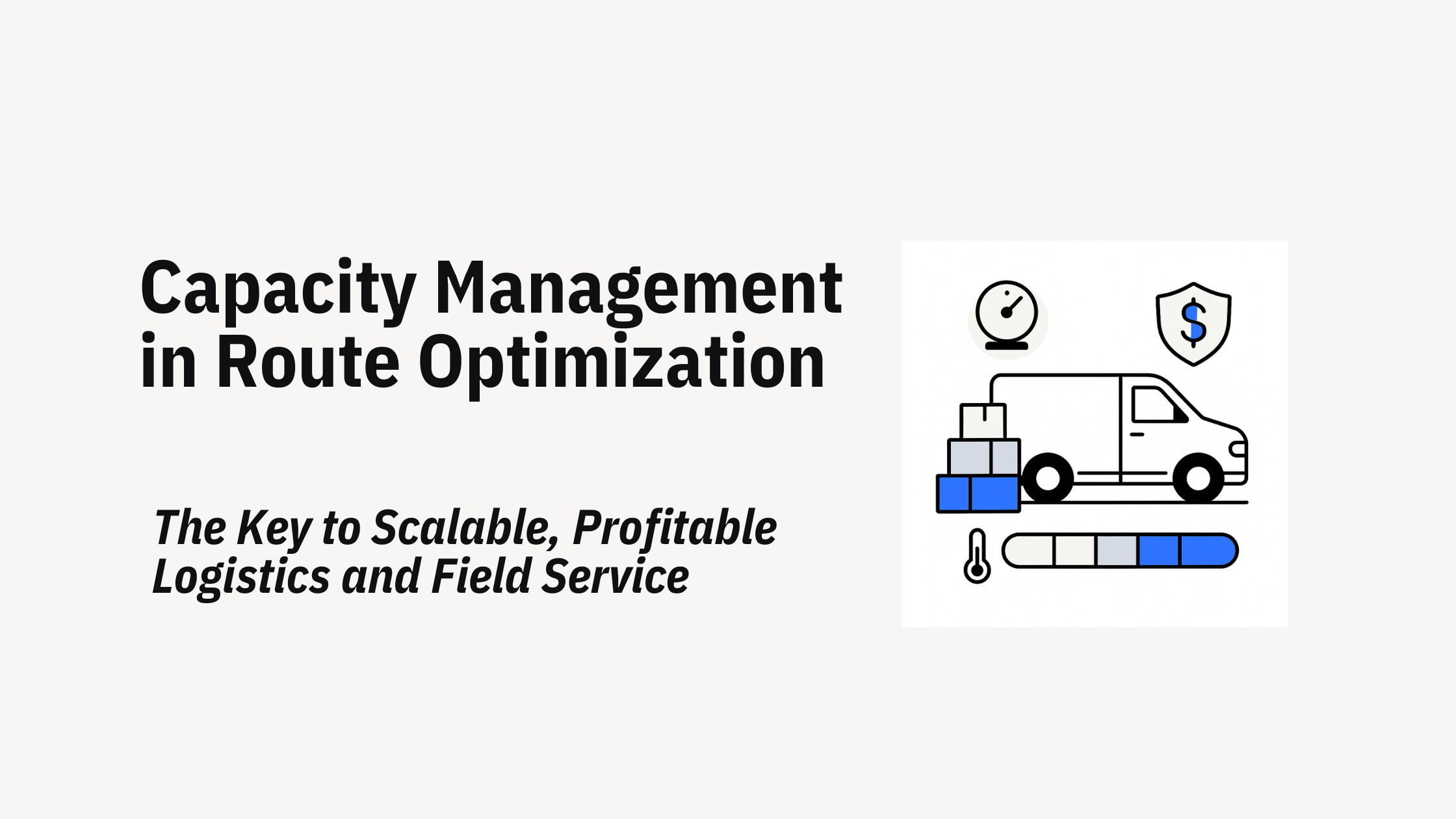Discover how AI Route Optimization is transforming field service operations with enhanced efficiency and precision. Explore its benefits, challenges, and tools like Solvice’s API for smarter route planning.

AI route optimization leverages Artificial Intelligence (AI) technologies, including optimization, machine learning, heuristics and predictive analytics, to enhance and streamline routing decisions. By processing extensive datasets, historical trends, and real-time information, AI-powered algorithms can intelligently determine the most efficient and optimal routes for various transportation, logistics and field service tasks.
AI is revolutionizing route optimization, offering numerous benefits that transform business operations:
1. Efficiency and Precision: Optimization AI algorithms analyze large datasets swiftly and accurately, producing highly optimized routes that minimize travel time and distance, thereby boosting overall operational efficiency.
2. Dynamic Adaptability: AI-based route optimization can adjust in real-time to changing conditions like traffic congestion, weather, or unexpected events, ensuring routes remain optimal even in dynamic environments.
3. Scalability and Complexity: AI algorithms tackle large-scale and complex routing problems that traditional methods struggle with, delivering near-optimal solutions for diverse scenarios.
4. Personalization: AI route optimization tailors routes to individual preferences and constraints, customizing solutions for specific users or vehicles based on their unique requirements.
5. Continuous Learning: Machine learning algorithms enable continuous improvement by learning from past routing data, enhancing future route planning with ever-improving solutions.
6. Multi-Objective Optimization: Optimization AI can balance multiple objectives simultaneously, such as minimizing travel time while optimizing fuel consumption, enabling businesses to achieve the right balance between various performance metrics.
7. Environmental Considerations: AI-powered route optimization can integrate environmental factors, promoting eco-friendly options like electric vehicles and green routing strategies, reducing carbon emissions.
8. Integration with Emerging Technologies: AI can seamlessly integrate with IoT and autonomous vehicles, paving the way for more efficient and intelligent transportation systems.
9. Competitive Advantage: Adopting AI route optimization provides organizations with a competitive edge by enhancing service quality, reducing operational costs, and offering more reliable and timely deliveries.
Solvice’s AI route optimization leverages AI, machine learning, and advanced algorithms to identify the most efficient routes. The process typically includes:
1. Data Collection: Gathering relevant data such as locations, distances, vehicle capacities, time constraints, traffic data, and more.
2. Problem Formulation: Defining the specific routing problem, such as the Traveling Salesman Problem (TSP) or Vehicle Routing Problem (VRP).
3. AI Finetuning: Employing machine learning to continuously learn from new data and past experiences, to choose the right algorithm configuration.
4. Algorithm Selection: Choosing the appropriate algorithm, whether heuristic, metaheuristic, or a combination.
5. Initial Solution: Generating an initial solution based on heuristics or random methods, serving as a starting point.
6. Iterative Improvement: Iteratively refining the initial solution using optimization techniques, exploring different routes, and evaluating changes.
7. Evaluation: Assessing solution quality and giving a quality score based on travel distance, time, vehicle utilization, and constraint adherence.
8. Termination Condition: Continuing the process until a specific solution quality, iteration count, or time limit is met.
9. Final Solution: Outputting the best-found solution representing the optimized route.
10. Real-Time Updates: Adjusting routes on-the-fly using real-time data updates, such as traffic information.
Traditional route optimization methods rely on basic heuristics or simple algorithms, leading to several limitations:
1. Limited Scalability: Struggle with large-scale routing problems, leading to suboptimal solutions.
2. Inefficiency: Produce routes that are not fully optimized, increasing travel time, fuel consumption, and costs.
3. Inability to Adapt: Cannot adjust in real-time to dynamic changes like traffic or road closures.
4. Lack of Personalization: Do not consider individual preferences, leading to generic solutions.
5. Inability to Handle Multiple Objectives: Struggle to optimize for multiple objectives simultaneously.
Supervised Learning for Demand Prediction: Utilizing regression or time series analysis to predict demand and optimize routes accordingly.
Unsupervised Learning for Clustering Delivery Locations: Employing algorithms like k-means clustering to group delivery locations for optimized routing.
Genetic Algorithms for Optimizing Routes: Inspired by natural selection, these algorithms generate potential solutions, evaluate their fitness, and evolve better solutions over iterations, suitable for large-scale routing problems.
Reinforcement Learning for Adaptive Route Planning: An agent-based approach where the agent (vehicle) learns to make optimal routing decisions through interactions with the environment (road network and traffic conditions).
1. Scalability and Complexity: Efficiently handle large-scale and complex routing problems, delivering near-optimal solutions.
2. Efficiency and Precision: Deliver highly optimized routes, minimizing travel time, distance, and costs.
3. Dynamic Adaptability: Adjust routes in real-time based on changing conditions.
4. Personalization: Customize routes based on specific user preferences and constraints.
5. Multi-Objective Optimization: Balance multiple objectives, optimizing for various performance metrics.
6. Continuous Learning and Improvement: Learn from past data to continuously refine routing decisions.
7. Environmental Considerations: Incorporate eco-friendly options and reduce carbon emissions.
8. Integration with Emerging Technologies: Seamlessly integrate with IoT and autonomous vehicles for intelligent transportation systems.
Solvice’s AI route optimization and planning offer numerous advantages:
1. Cost Savings: Reducing fuel consumption, vehicle wear, and operational costs.
2. Time Efficiency: Minimizing travel time for faster deliveries and better resource utilization.
3. Enhanced Customer Service: Ensuring timely and accurate deliveries.
4. Real-time Adaptability: Continuously adjusting routes based on real-time data.
5. Multi-Objective Optimization: Balancing multiple objectives for optimal performance.
6. Scalability and Complexity: Efficiently handling large-scale routing problems.
7. Environmental Benefits: Promoting eco-friendly routing options and reducing carbon emissions.
8. Improved Resource Utilization: Optimizing resource allocation.
9. Adaptive and Customizable: Catering to specific constraints and preferences.
10. Strategic Decision Making: Informing long- and medium-term planning and strategic decisions.
11. Continuous Learning and Improvement: Continuously refining routing solutions.
12. Competitive Advantage: Enhancing service quality and operational efficiency, leading to a stronger market position.
Solvice is at the forefront of AI route optimization, offering innovative solutions that transform logistics and transportation, driving efficiency, and enhancing customer satisfaction.


